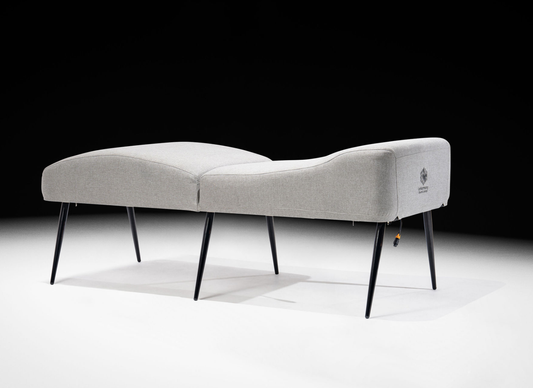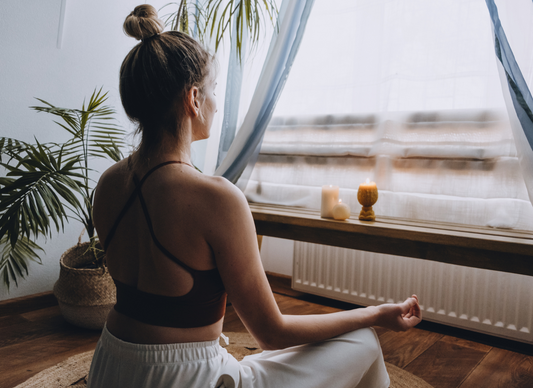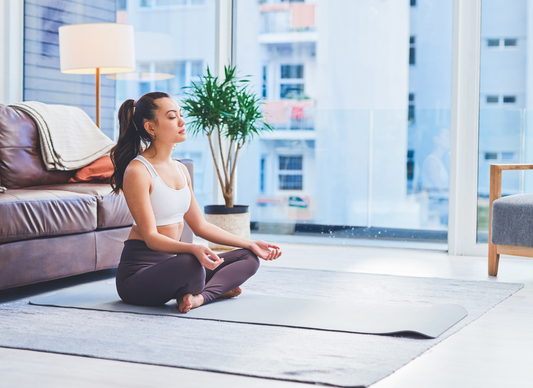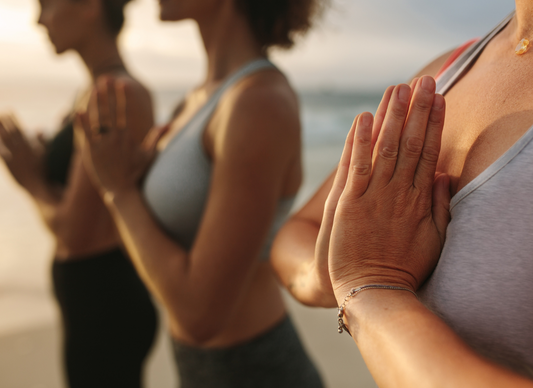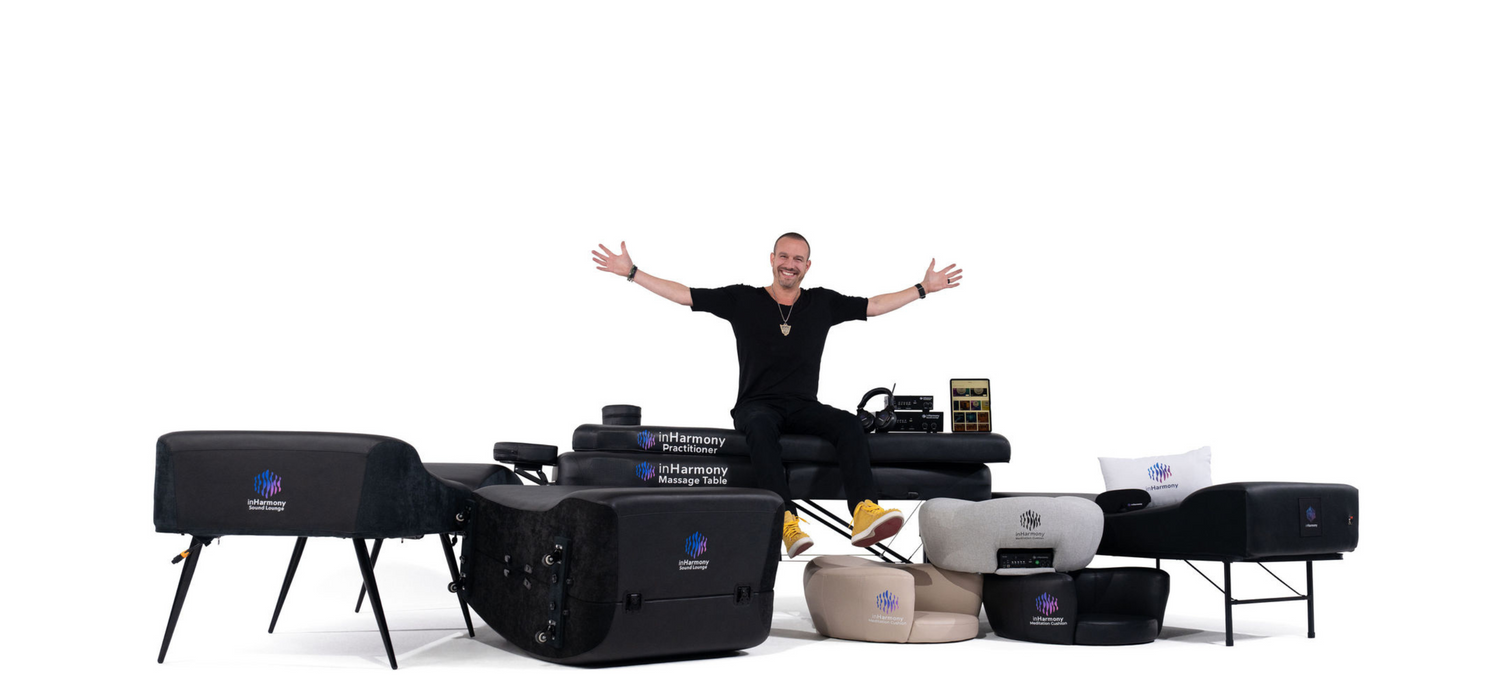Meditation may help boost your health, improve your mood, and increase feelings of connection with those around you. When we meditate, we inject far-reaching and long-lasting benefits into our lives: We lower our stress levels, we get to know our pain, we connect better, we improve our focus, and we're kinder to ourselves.
Meditation is simpler than most people think and it’s something everyone can do. With these five basic steps to mindfulness from the team at inHarmony you’ll be ready to get started.
1. Environment
Make sure you’re somewhere where you can relax into this process. Find a comfortable quiet place that feels calm and quiet to you. Choosing a dedicated room or space to meditate can help train the body and mind to feel more comfortable and allow you to more easily transition into meditation. Think of it in the same way you'd only go to your home office to focus on work — it's important to set a dedicated space to help you stay focused on meditation.
Creating a meditation space and keeping it clean and uncluttered can help make meditation feel special and important. It is also an opportunity to create a space that nourishes a more relaxed state of mind; for example, you could use a cushion, light a candle, add plants, use a white noise machine, and keep it a phone-free zone.
Once you’ve selected your space then it’s time to get comfortable. Overall, the more comfortable you are, the easier the meditation will be.
2. Timing
Set a time limit. If you’re just beginning, it can help to choose a short time, such as five or 10 minutes. Consistency is helpful to establish routine so try to select a time of the day to meditate. For example, you may want to try pairing meditation with a daily habit you already have in place, like journaling before bed or having a cup of coffee in the morning.
3. Awareness of the Senses
This includes internally within your body, breath, and mind as well as external factors that impact the five senses of sound, touch, sight, and smell.
Body Awareness: You can sit in a chair with your feet on the floor, you can sit loosely cross-legged, you can kneel, or lie down — all are fine. Just make sure you are stable and in a position you can stay comfortably in for a while. Avoid fidgeting or moving too much during meditation. It's common to feel restless and want to change positions throughout your meditation. Try not to let your position become a distraction and adjust, if needed.
For example, look for a body scan meditation where you focus on body sensations in addition to your breath. You will typically start with your feet — and then work up your body, noticing the sensations in each part, all the way to the top of your head.
Breath Awareness: Start with a few deep breaths to calm the body. Feel your breath. Follow the sensation of your breath as it goes in and as it goes out. Taking these initial deep breaths before you begin your meditation can jump start the relaxation response — when the relaxation response is stimulated, the body begins to feel safe and at ease.
Then, as you start the meditation, your breathing should return to a normal rate. Paying attention to your breathing will be important throughout the meditation, and this type of mindful breathing throughout the day can lower stress levels in the body.
Mindful Awareness: Allow thoughts to come and go. Notice when your mind has wandered. Inevitably, your attention will leave the breath and wander to other places. When you get around to noticing that your mind has wandered—in a few seconds, a minute, five minutes—simply return your attention to the breath. Meditating isn't about totally clearing your mind of thoughts. Don’t judge yourself or obsess over the content of the thoughts you find yourself lost in. Be kind to your wandering mind.
Acknowledge these thoughts when they pop up and give yourself permission to address them later. Or try setting an intention. You can say it out loud or silently in your mind. An intention or mantra is commonly used in transcendental meditation to help keep you calm and focused during your practice. For example, "I am calm" or "I am conquering my fears."
External Awareness (Five Senses)
1. Let’s start with sound. Sitting in total silence isn't for everyone. If you prefer relaxing music to slip into a meditative state, go for it. In fact, some studies suggest that listening to music to relax can reduce stress levels. Our recommendation is to download the inHarmony APP. LINK
2. What can you touch and feel? Maybe your yoga mat is cold or the rug you’re sitting on is soft. Our recommendation is to use the inHarmony Sound Lounge or inHarmony Practitioner, or inHarmony Meditation Cushion. These products are tech-assisted meditation cushions that help you relax and improve mental health using Vibroacoustic Therapy. When meditating with inHarmony you’re able to achieve peace, relax, clear your mind, and optimize your human potential. Shop Online
3. What do you see? Maybe you’re choosing to meditate with your eyes closed and sight isn’t actively involved in your meditation. Or maybe you’re positioned on a sunny beach and watching the waves roll in and out is a part of your practice. Be intentional with your sight and how it works in complement with your other senses.
4. Smell is very powerful. This sense can trigger feelings of great joy, comfort, and peacefulness. It can also work the other way. For example, consider lighting a scented candle everytime you meditate to support your journey
5. A cup of herbal tea may do wonders for taste. Consider chamomile, jasmine, or peppermint. Why? These are all calming and will work to support your meditation practice.
4. Close with Kindess
When you’re ready, gently lift your gaze (if your eyes are closed, open them). Take a moment and notice any sounds in the environment. Gently begin to move your fingers and your toes, and then you can move your hands and feet and stretch your arms or legs. Notice how your body feels right now. Be kind to yourself when you notice your thoughts and emotions.— some days will be easier than others. At its root, meditation is about learning how to treat yourself with kindness no matter what you may be experiencing at any given moment.
5. Come Back the Next Day
The power of meditation comes in creating a routine and consistently making it a daily practice. Meditating is about creating a pause in your day, everyday. Perhaps take a moment to thank yourself for practicing self-care and be proud of the effort you’re taking to meditate. Schedule time that gives you a few minutes before jumping into a stressful task. By easing into your next activity, it'll make it easier to bring the skills you are learning through meditation into your daily life.
Remember…go into your meditation practice without expectations. Meditation isn’t an instant quick-fix to solving all of life's problems. As with any other form of exercise, meditation takes effort, practice, and time to see or feel the benefits.

